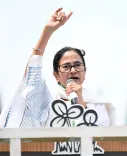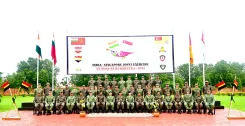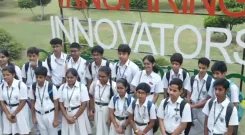Is Prepaid Smart Metering a Top Priority for Government Establishments?

Synopsis
Key Takeaways
- Prepaid smart metering is set to be prioritized in government establishments.
- Target completion date for installation is August 2025.
- Emphasis on creating zones for green energy to achieve Net Zero emissions.
- Importance of collaboration between Central and state governments highlighted.
- Focus on reducing AT&C losses for distribution sector viability.
Mumbai, May 13 (NationPress) The Union Power Minister Manohar Lal announced on Tuesday that pre-paid smart metering is set to be a primary focus in all government establishments, including government colonies. He emphasized the necessity of creating designated zones for green energy to achieve Net Zero emissions.
The minister made these statements during the Regional Conference for the Western Region States, which saw the participation of Union Minister of State for Power and New & Renewable Energy Shripad Naik, Maharashtra Chief Minister Devendra Fadnavis, Goa power minister Ramkrishna alias Sudin Dhavalikar, Gujarat power minister Kanubhai Mohanlal Desai, Maharashtra minister of state for power Meghana Sakore Borikar, and Madhya Pradesh power minister Pradyuman Singh Tomar, who joined via video conference.
According to the minister, the installation of pre-paid smart meters in government establishments, including government colonies, should be prioritized, with a target completion date set for August 2025. These smart meters hold significant potential to revolutionize consumer interactions with utilities through data analytics utilizing AI/ML tools.
He pointed out that distribution utilities need to enhance their efficiency through the execution of infrastructure improvement and smart metering initiatives under the RDSS. The Ministry has also streamlined funding processes for smart metering projects.
Minister Manohar Lal stressed the importance of a modern, future-ready, and financially sustainable power sector to drive the nation’s growth. He highlighted the necessity for collaboration between Central and state governments in reaching the goal of Viksit Bharat by 2047.
He further noted that such regional conferences would aid in pinpointing specific challenges and potential solutions, emphasizing the need for resource adequacy and essential power purchase agreements.
Additionally, states should focus on establishing necessary storage capacities through Pumped Storage Projects and Battery Energy Storage Systems. He also called for an increase in the Nuclear Generation Capacity of the country, targeting 100 GW by 2047, and reiterated the need to create special zones for green energy to meet Net Zero emissions.
The minister acknowledged that the distribution sector is a crucial element in the power sector's value chain but faces challenges due to inadequate tariff structures, inefficient billing and collection processes, and delayed payments from government entities.
To enhance the viability of the distribution sector, it is crucial to reduce aggregate technical and commercial (AT&C) losses and bridge the gap between Average Cost of Supply and Average Revenue Realized. This necessitates that tariffs be cost-reflective and government debts and subsidies be disbursed promptly to distribution companies (DISCOMs).
During his address, Chief Minister Fadnavis underscored the initiatives taken by Maharashtra to enhance the quality and reliability of power supply statewide. He elaborated on the proposed strategies to decrease AT&C losses, subsequently lowering supply costs, and urged the central government to assist with issues affecting the state, particularly in restructuring DISCOM debts for their viability.
The Union Power Secretary, Pankaj Agarwal, highlighted the critical need to ensure necessary capacity tie-ups following the resource adequacy plan up to FY2035 to meet future power demands. Arrangements for the development of inter-state and intra-state transmission capacities through various financing methods, like Tariff-Based Competitive Bidding (TBCB), Regulated Tariff Mechanism (RTM), budget support, or monetization of existing assets, are also vital.
In light of recent geopolitical developments, securing infrastructure within the power sector, including transmission grids and distribution systems, is paramount. States must implement necessary cybersecurity protocols and prepare to execute a power islanding scheme.







